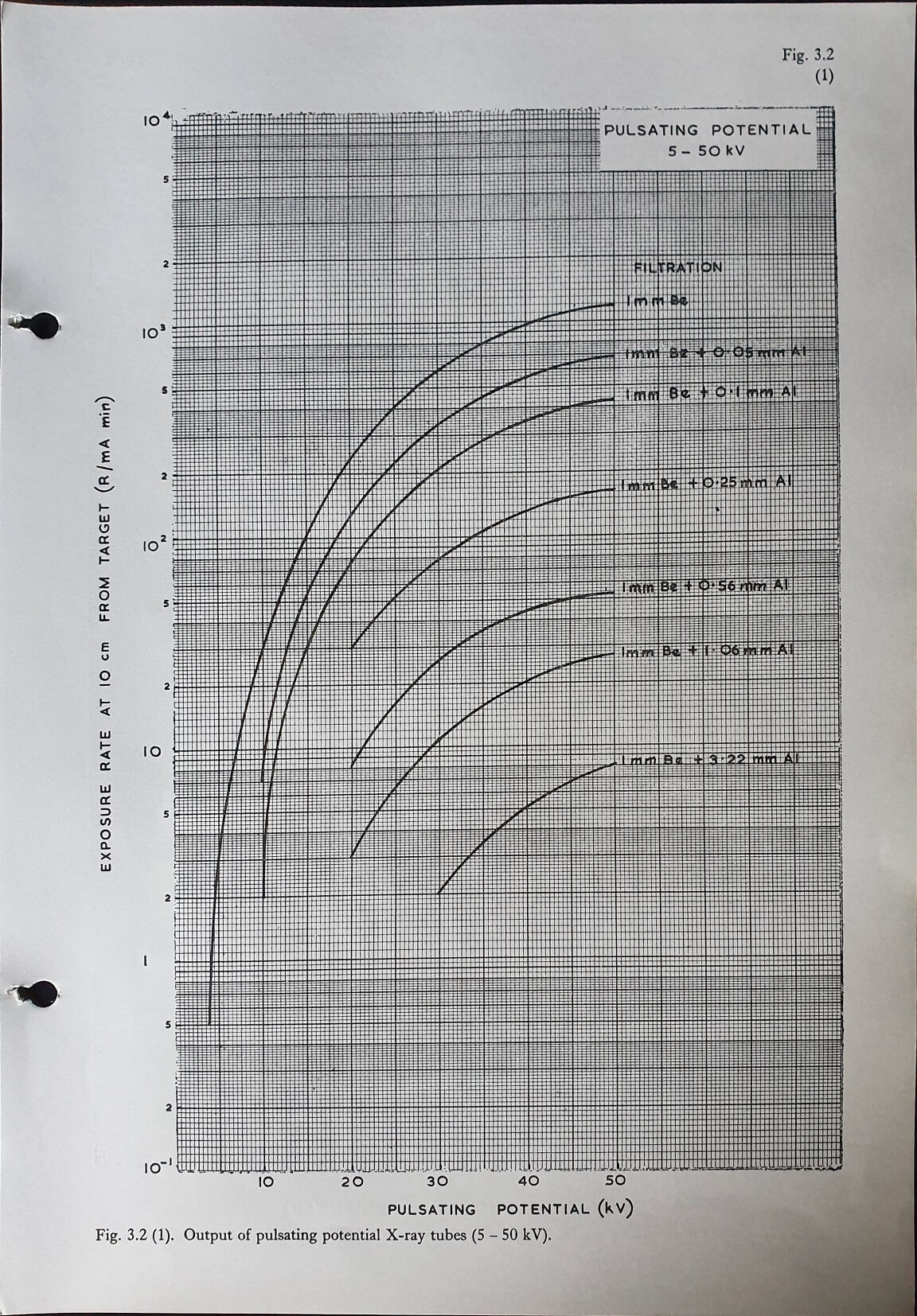X-ray equipment: Pulsating potential 5-50 KV: Fig 3.2 (1)
Published: Sep 29, 2021
Source: Ionactive Consulting Radiation Protection Resource

If you take the y-axis value and multiply by 5.262, this will give you a figure of mGy/ h per mA at 1m. Note how exposure rate is significantly affected by filtration. Note also that this is for a pulsating potential x-ray unit.
A note on units
In SI units, R (roentgen) has the units of charge divided by unit mass (C/kg). C (coulomb) is the amount of electric charge transported by a current of 1 ampere during 1 second.
1 R is the amount of radiation required to liberate positive and negative charges of one electrostatic unit of charge (about 3.33564 x 10−10 C) in 1 cm³ of air at standard temperature and pressure (STP).
In air, 1 R = 2.58×10−4 C/kg. Given that the average ionising energy of air is 34 eV, the energy required to produce 1 C of ionisation in air is 34 J. So 2.58×10−4 C/kg x 34 J = 0.00877. So 1 R is 0.00877 Gy at STP in air (i.e. not 0.01 Gy). This is used to convert R in the above graph into the Gy's (other factors are introduced to output the dose rate at 1m per hour in mGy/h per mA).
In real world conditions a typical value measured on a radiation monitor (i.e. GM tube / ion chamber) will be numerically similar such that you can also consider the output as mSv / mA h at 1 m.
